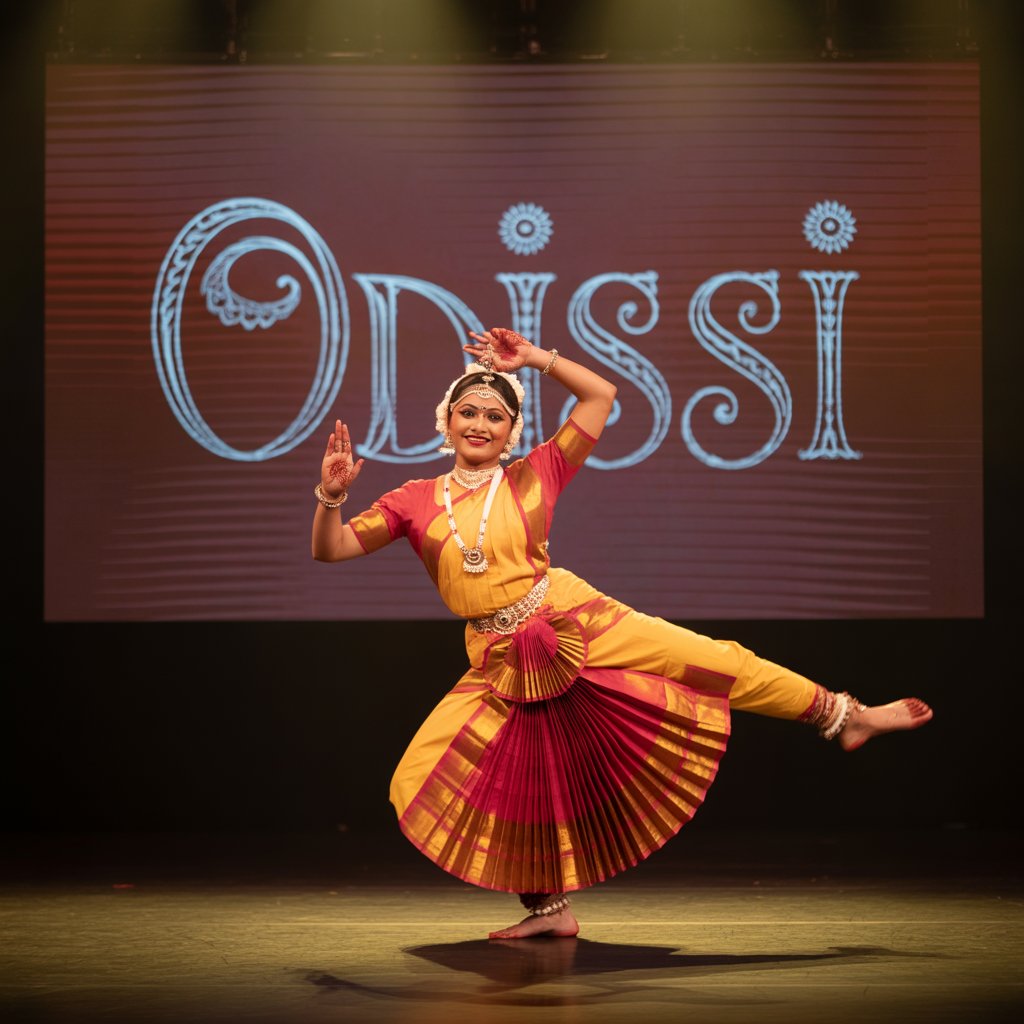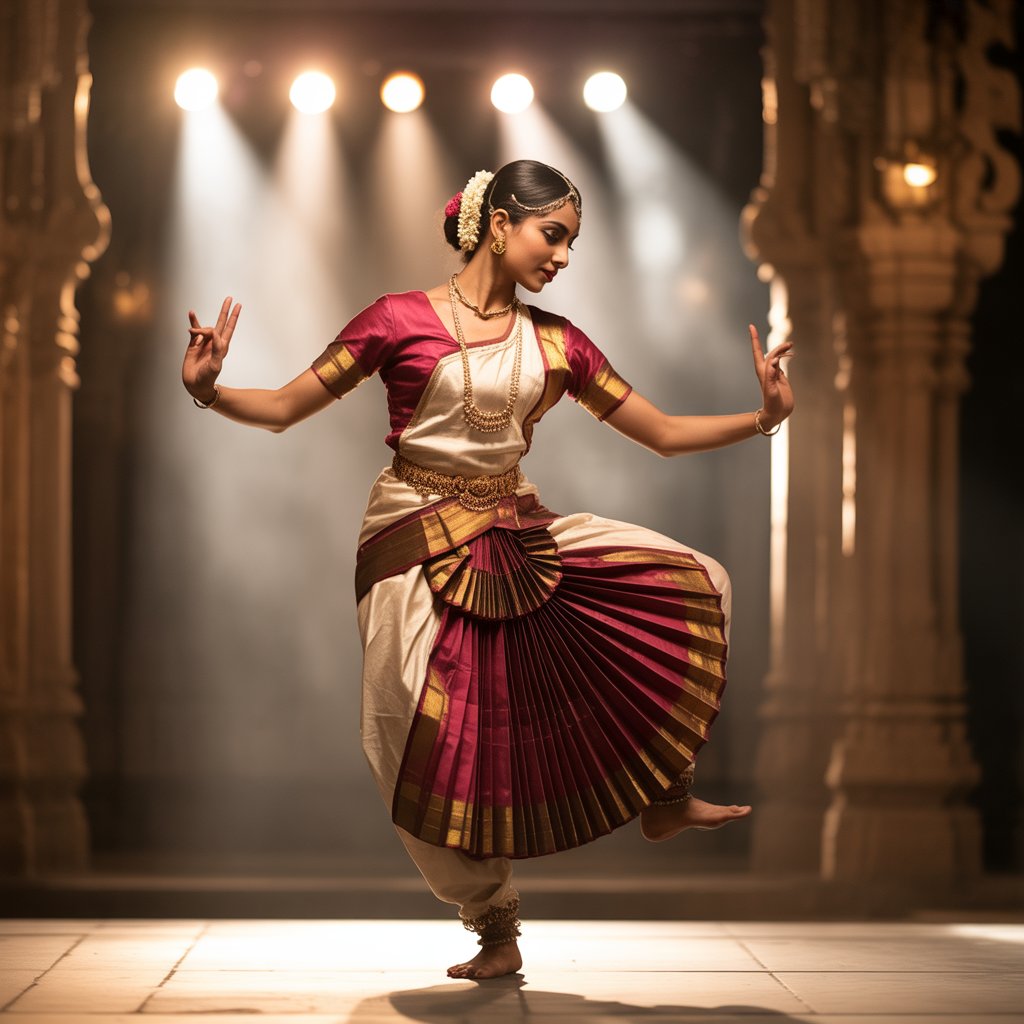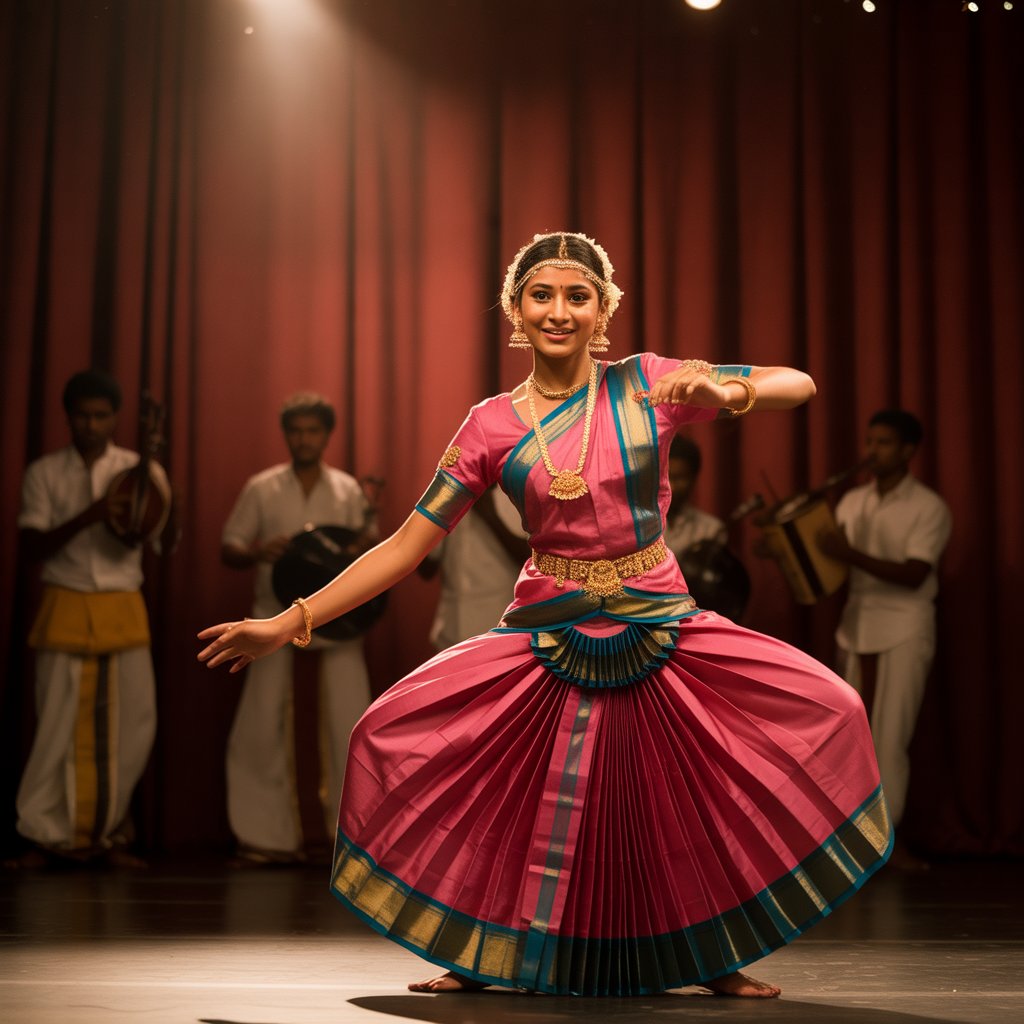
History and Origins of Odissi
Odissi dance has deep roots in ancient Indian scriptures. This traditional form thrived during the medieval era, showcasing its rich history and significance.
Traces found in ancient scriptures
It emphasizes the significance of movement and expression in Indian classical dance. Temples in Odisha also provide evidence of Odissi’s early existence through sculptures and carvings that depict dancers.
The ancient texts show how these dances played roles in rituals and religious ceremonies. They captured not just artistic beauty but also cultural values central to Hindu traditions.
These origins lay a strong foundation for Odissi as a traditional Indian dance form that honors its rich history and heritage.
Flourished during medieval era
Odissi dance flourished during the medieval era in India. This period saw significant development and support for temple dance. Kings and patrons encouraged artists to perform this classical art form in temples across Odisha.
These performances often celebrated religious themes, showcasing stories from Hindu mythology. Many choreographers crafted intricate dances that highlighted the beauty of Odissi techniques.
Temples became vibrant hubs for cultural expression. Artists adorned themselves in traditional costumes, enhancing their performances with expressive gestures and movements. The combination of music, rhythm, and elaborate footwork captivated audiences and drew attention to the rich heritage of Eastern Indian dance.
This growth helped solidify Odissi as a respected component of Indian culture over time.

Decline of Odissi dance during British rule
The decline of Odissi Dance during British rule marked a significant shift. Colonial policies affected many traditional art forms in India. During this period, the dance lost its patronage and support from temples.
The British viewed Indian cultural dance as inferior and marginalized it. As a result, fewer performances took place, leading to decreased visibility for Odissi.
By the late 19th century, artists began to revive interest in Odissi Dance. This revival helped preserve its techniques and rich history for future generations.
Revival and recognition
Odissi dance experienced a significant revival in the 20th century. Many artists and scholars worked hard to bring this ancient dance form back to life. They studied old texts and gathered knowledge from traditions.
Key figures like Guru Kelucharan Mohapatra played vital roles in this movement. His efforts helped raise awareness and appreciation for Odissi.
Government support also contributed to its recognition. Institutions began offering formal training in Indian classical art forms, including Odissi. This cultural push led to performances gaining visibility on national and international stages.
Audiences now enjoy the beauty of Odisha dance traditions through various platforms, cementing Odissi’s place as a cherished component of India’s cultural heritage. The next section will explore traditional costumes and makeup in Odissi dance.
Cultural and Spiritual Significance
Odissi is deeply spiritual, often depicting tales from Hindu epics like the Ramayana, Mahabharata, and Gita Govinda. Through graceful movements and expressive gestures, dancers bring stories of devotion, love, and divinity to life. This makes Odissi not just a performance art but also a living expression of Odisha’s culture and religious ethos.
Unique Features of Odissi
Key Principles and Techniques of Odissi Dance
Tribhangi
Bhangas refers to the deflection of the body from the head, torso, and hips. These are categorized as – Samabhanga, Dvibhanga, and Tribhanga. The key technique that gives Odissi a distinct characteristic is the Tribhanga pose.
In the Tribhanga pose, the body is divided into three parts: head, torso, and lower body. The dancer creates graceful bends at the neck, torso, and hips, giving a gentle S-shaped curve to the body. This is also known as the Natavara bhangi in Odissi.
Bandha Nrutya
Bandha refers to the acrobatic poses primarily performed by the Gotipuas – the male dancers. These are key positions that involve intricate and geometric patterns formed with the body, emphasizing symmetry, balance, and control.
Bandha Nrutya requires the dancer to maintain a firm and stable core, along with a strong connection between the upper body, lower body, and limbs. Some popular bandhas in Odissi include Bhumi Bandha (earth pose), Janu Bandha (knee pose), and Hasta Bandha (hand pose).
Pada Bheda
The footwork in Odissi dance is known as the Pada Bheda. Pada means feet and Bheda means variations. The Pada Bhedas contribute to graceful and fluid dance movements. There are a total number of 46 foot positions in Odissi.
Some significant Pada Bhedas include – Sama, Sthana, Apluta, Bhramari, Ekpada Bhramari, Chauka, Alidha, and Pherei.
Hasta Mudra
Like all other classical dance forms, hasta mudra, or hand gestures play a significant role in Odissi dance. Hasta mudras along with body movement and facial expression, help to express the narrative.
The hasta mudras are categorized into –
Samayukta Hasta Mudra- 28 types of single-hand gestures or hasta mudras,
Asamayukta Hasta Mudra – 23 types of joint hand gestures
Nrutya Hasta Mudra – 17 pure Nrutya hasta mudras
Parampara Hasta Mudra – 10 types of traditional hand gestures.
Abhinaya
Abhinaya refers to the art of expression and it involves all the elements – body movements, facial expression, footwork, hasta mudras – in totality. It refers to the effective portrayal of the Navarasas – which include – love (shringara), joy (hasya), anger (raudra), compassion (karuna), disgust (bhayanaka), fear (bhayanka), surprise (vibhatsa), peace (shanta), and sadness (vira).
The dancer’s ability to effectively express emotions, portray characters, and communicate narratives through Abhinaya is a testament to their artistry, skill, and understanding of the dance form. It adds a captivating and immersive dimension to Odissi performances, leaving a lasting impact on the viewers.
The entire body becomes an instrument of expression in Odissi dance. The dancer uses subtle movements and postures to portray characters and convey emotions. The gestures of the arms, the curves of the torso, and the fluidity of the spine all contribute to the nuanced portrayal of the narrative.
Specific parts of the face are involved in expressing emotions and storytelling. It includes the eyes (Netra Anga), the eyebrows (Bhru Anga), the forehead (Lalita Anga), the nose (Nasa Anga), the cheeks (Karna Anga), and the chin (Kapola Anga). Each of these body parts is engaged and animated to convey various aspects of the performance.
Costumes and Makeup in Odissi Dance
The Odissi costume is as graceful as the dance itself. Dancers wear brightly colored sarees, usually in red, white, or orange, draped in a unique style that allows free movement.
Silver jewelry—including bangles, necklaces, waist belts, and a distinctive headpiece called Mathami—adds elegance to the attire. The makeup highlights expressive eyes and facial features, enhancing storytelling during performances.
Ornaments
Both male and female dancers wear heavily embellished ornaments that add to the attractiveness of the overall costume.
Women wear multiple neckpieces, heavy earrings, bangles, and ‘bajuband.’ One of the distinct features is the ‘mukut’ or the crest of white flowers worn by the women around the bun which is completed with a ‘mangtika’. A waistband or ‘mekhala’ made of silver and gold is tied around the waist. And finally, the look is completed with ‘ghungroos’ or anklets.
Makeup
The female dancers complete their look with makeup that help to highlight their features. Each and every facial feature play a role in the process of expressing the narrative in coordination with the body movement. Hence, each feature has to be defined properly.
Thick lines of eyeliner are used to define the eyes. The eyebrows are filled to give a distinct shape. The lips are defined with bright red lip color and the forehead is adorned with a red bindi and further decorated with designs drawn out of sandalwood paste.
The male dancers wear minimal jewelry pieces and light makeup that help to etch their character on the stage in an appropriate manner.
Modern Evolution and Global Reach
Thanks to legendary gurus like Kelucharan Mohapatra, Sanjukta Panigrahi, and Mayadhar Raut, Odissi has gained worldwide recognition. Today, Odissi is performed on international stages, celebrated not only in India but across the globe for its timeless elegance.
Instruments & Music
The unique feature of this dance form is that it incorporates Indian ragas, both from south and north, that indicate the exchange of concepts and performance arts between the two parts of India. ‘Shokabaradi’, ‘Karnata’, ‘Bhairavee’, ‘Dhanashri’, ‘Panchama’, ‘Shree Gowda’, ‘Nata’, ‘Baradi’ and ‘Kalyana’ are the main ragas of Odissi. The musical instruments include tabla, pakhawaj, harmonium, cymbals, violin, flute, sitar and Swarmandal.
How to Learn Odissi Dance
For enthusiasts, several dance academies in Odisha and across India offer structured Odissi training. Many online classes and workshops have also made it accessible for learners worldwide. Beginners can start with basic postures, footwork, and storytelling techniques before progressing to complex choreographies.
Conclusion
Odissi dance is more than a performing art—it’s a spiritual journey that connects the dancer, the audience, and the divine. Its beauty lies in its ability to blend tradition with emotion, making it a cultural treasure that continues to inspire generations. Whether you’re a learner, a performer, or simply an admirer, Odissi invites you to experience the grace and soul of India’s classical heritage.





Pingback: 7 Wonders of India: History, Significance & Travel Guide - a2ztrendy.com